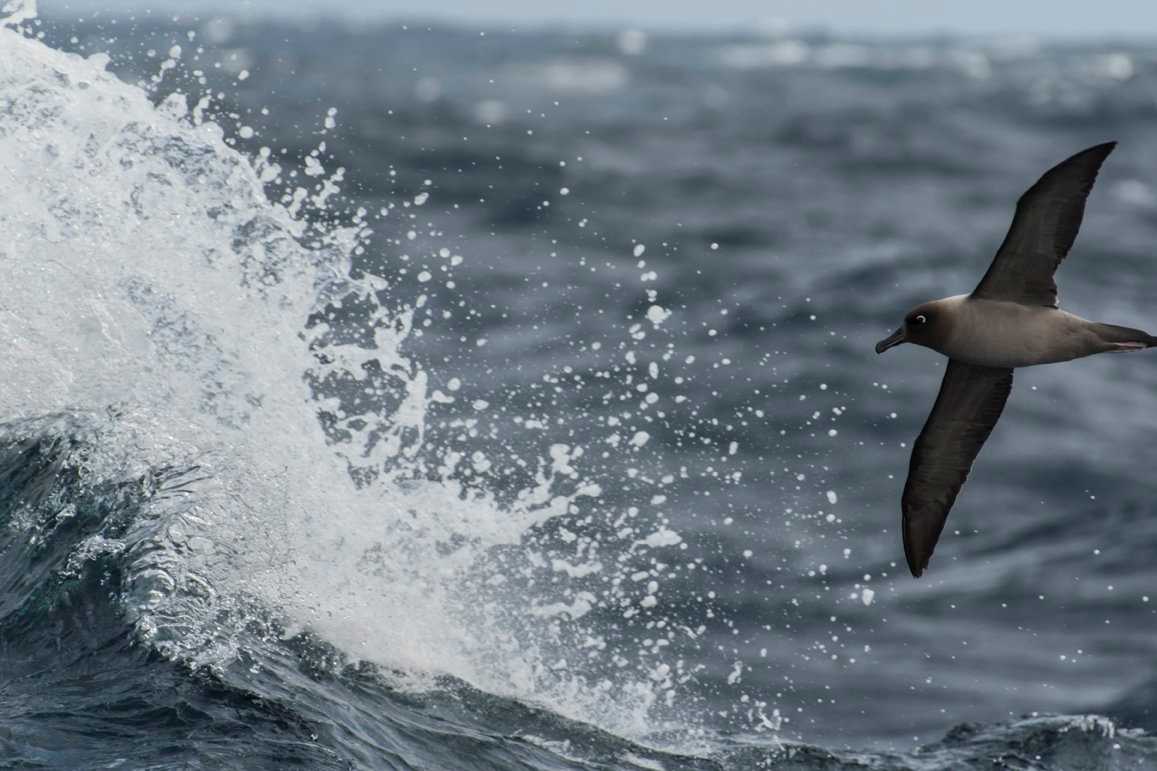WE ARE HERE! By all accounts, it was a bumpy Drake crossing but today we arrived in the Antarctic. We crossed the convergence during the night where the biological Antarctic begins. Our course was accompanied by an occasional fin whale, a couple of fur seals and albatross. The elegant black-browed albatross has been our companions the entire way, but today we also were visited by southern fulmars, cape petrels, and the subtly sophisticated light-mantled albatross.
There is something special about the light-mantled albatross. It seems to watch with more care as that white circled eye scans for krill in the waves. We watched 2 partners circle our ship while the wind and waves danced below them. This morning we listened to the plight of the whales of the Southern Ocean. While many species still have not recovered from the prolonged era of whaling, the humpback whales are making a strong effort at recovery. Our naturalist, Ella Potts explained it all with vigor and enthusiasm. Following that presentation, our National Geographic photographer, Max Lowe, dazzled us with images from around the world, then stunned us with a personal tale of adventure, loss, and perseverance all within a yellow rectangle.
The birds continued to soar, the whales kept blowing and the winds kept us aware to keep one hand for the ship. After lunch, our remarkably energetic captain, Martin Graser, explained the ice to us. He showed us images from his extensive experience here in Antarctic waters. We also gained an appreciation for the ship’s design and ice ready hull. Immediately after Captain Graser’s lecture, we saw land. Our first sighting of the trip and a sure sign that we had indeed arrived. Off our starboard beam, we passed the South Shetland Islands. Photos were taken off of both sides of the ship because our port side passed a tabular iceberg that was larger than our ship by far.
That should have been enough for a day but just as we were headed to dinner, A57A appeared off our starboard side. This is a big one. This tabular iceberg, from the Larsen C ice shelf, is 12.6 miles long by 5.75 miles wide (20.3 km x 9.2 km). It went on and on. This iceberg is so large that it is being monitored by scientists around the world via satellite.
The amount of ice we saw will undoubtedly be the largest iceberg of our Antarctic experience. It provided the first real WOW of the trip. Our adventure has taken flight and we can hardly wait until tomorrow.







